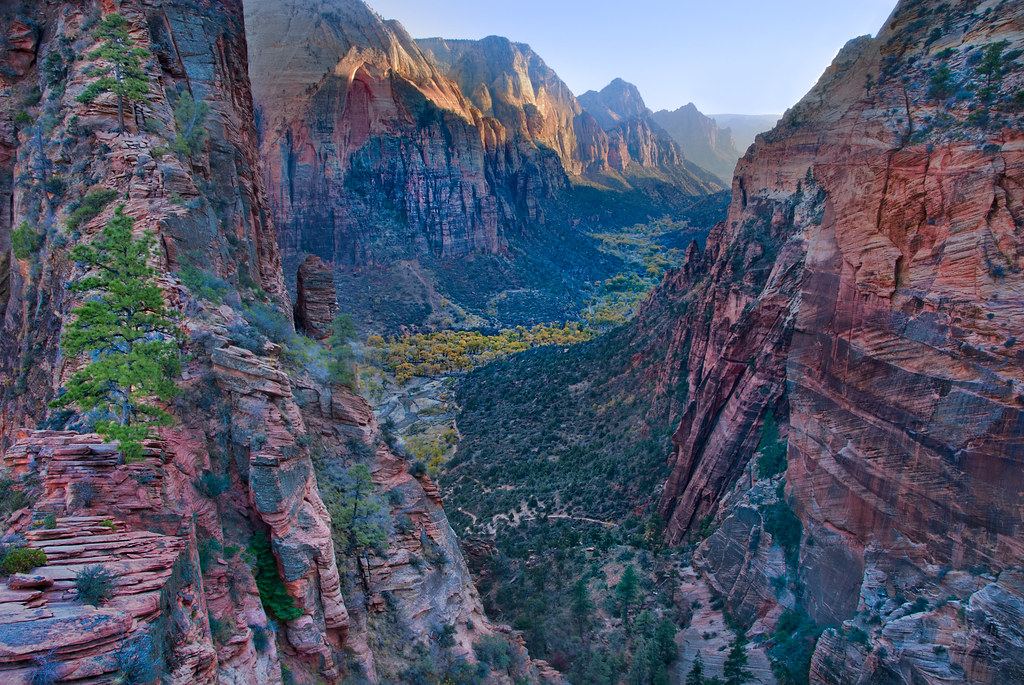I made this image from five bracketed captures shot in the autumn of 1997, combined primarily with Nik Software’s new HDR Efex Pro. Taken near sunset, I was standing on the narrow neck of land leading up to Angel’s Landing in Zion National Park, Utah, above the set of switchbacks known as Willy’s Wiggles. This is the kind of location that is great for photography but gives one a feeling of vertigo because of the drops to the valley floor in several directions. I used a tripod to make sure the composition of each image was identical, and bracketed shutter speeds using Manual exposure mode.
I’ve tried a couple of times to combine these images, and HDR Efex Pro is the first software that has let me get results I am happy with. In other words, Nik Software has done a great job. I am very impressed with this program. Like the leading HDR competitors—Photomatix from HDR Soft and Adobe Photoshop’s Merge to HDR Pro—there are strengths and weaknesses. A detailed review and analysis must wait until I have more time, but my first take is that this software is more intuitive and easier to use than HDR Soft, and more powerful than Merge to HDR Pro.
I’ll probably use all three, depending upon the specific set of images I want to combine. My further understanding is that any automated HDR software is going require further tweaking following the image combination and tone curve application. You can read more of my thoughts on this issue in the context of Photomatix in Tone Poem.
In other words, there is no one-size-fits-all magic HDR bullet. That said, if you are interested in HDR you probably won’t go wrong with HDR Efex Pro.
Worth noting: I am often a proponent of using layers and masking to create hand-processed HDR images in place of automated HDR processing. My methodology for multi-RAW and hand-HDR processing is explained in The Photoshop Darkroom and The Photoshop Darkroom 2.
Disclosures: Nik Software kindly provided me with a review copy of HDR Efex Pro. Also, I am in the process of planning a book about HDR photography.
